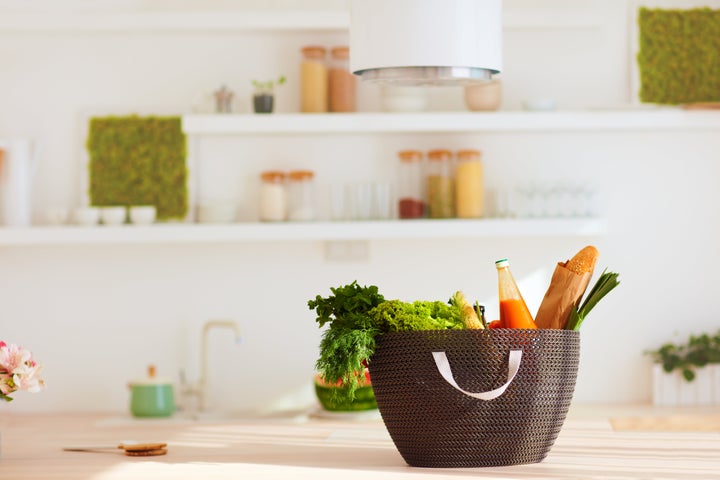The Portland, Oregon, grocery chain Green Zebra prides itself on caring for the environment. The store specializes in sustainably raised food and socially conscious policies, encouraging customers to use reusable bags for their purchases in order to help reduce waste. But lately, they’ve reversed this policy. Due to the coronavirus epidemic, customers are being asked not to bring reusable bags into the store. Instead, they are being provided with recyclable paper bags.
Green Zebra founder and CEO Lisa Sedlar told HuffPost, “In the best of times, reusable bags can be unhygienic because a lot of people don’t wash them with soap and water after each use. During this unprecedented time, it’s life-and-death important to protect everyone’s health, so it wasn’t a hard decision to ban the use of reusable bags.”
Sedlar isn’t alone in worrying about reusable bags. Across the country, the governors of states such as Massachusetts, Illinois and Maine are temporarily banning reusable bags in an attempt to protect both customers and grocery store employees from spreading the virus.
Marion Nestle, a professor of food studies, nutrition and public health at NYU, said this policy makes sense. “The single greatest risk factor for COVID-19 is getting within breathing distance of someone who is carrying the virus. The next greatest is touching a surface they’ve touched recently. In this situation, the theoretical risk goes both ways. The grocery store runs the risk that your bag is contaminated and the checkout clerk will touch it, pick up the virus and pass it on. You run the risk that the checkout clerk is a carrier and touches the bag you take home. Wasting some bags seems like a small price to pay for peace of mind.”

Despite this, the Centers for Disease Control and Prevention has yet to issue official guidelines when it comes to reusable bags during the coronavirus crisis. In most states, it is a case-by-case decision left to the stores themselves. For instance, at many Trader Joe’s locations, customers are still allowed to bring bags from home, provided they’re willing to package their own groceries.
Cailin Carlile works for a grocery store that has recently implemented such a policy to minimize the number of surfaces touched by cashiers. She said, “If we touch a contaminated bag and then touch another person’s cash or bag, then we’re only making more opportunities to spread illness.”
In some cases, banning reusable bags might not even be possible. Karlie Frisbee Brogan works at a large national grocery chain which recently encouraged customers to bring their own bags because they were experiencing a paper bag shortage at her store. She said she was never fond of touching reusable bags people brought from home, even before the coronavirus crisis, “but especially once the pandemic hit, I really didn’t want to handle their unwashed bags.”
It’s hard to blame her. Studies have shown that over 50% of reusable bags contain large quantities of bacteria and many even contain E. Coli and fecal matter. Food safety expert Jeff Nelken said that to be safe, reusable grocery bags should be cleaned every time you use them. In the age of the coronavirus, this is even more important. Luckily, he said, it’s very easy to do.
If you have disinfectant wipes on hand, Nelken said, you can use them to give your bags a good wipe down — but make sure they contain disinfectant approved by the Environmental Protection Agency, and to be sure to follow the instructions on the label.
If you don’t have wipes on hand, Nelken said you can make a homemade disinfecting solution with 4 teaspoons of unscented bleach for every 4 cups of water. Mix it in a spray bottle, spray on your reusable bag and wipe with a towel. The leftover mixture can also be used to wipe down household surfaces. He recommends making a new batch on a daily basis. Nelken said scented bleach can be substituted if necessary, but the resulting mix may be weaker in potency. This solution works with both plastic and fabric bags, but in the case of fabric, it’s always a good idea to perform a spot test first if you’re worried about discoloration before using a bleach solution or any other cleaner.
In cases where bleach isn’t available, Nelken said that hydrogen peroxide is another option: “According to the CDC, hydrogen peroxide is a stable and effective disinfectant against a wide variety of microorganisms, including bacteria and viruses, when used on hard, non-porous surfaces. Typically sold in 3% solutions, hydrogen peroxide can be used as-is, directly from the bottle. It’s best to keep it away from fabrics when cleaning and to wear gloves to protect your hands.”
If you’re interested in throwing fabric bags in the washing machine, be sure to read the label for care instructions. The CDC recommends washing and drying fabrics at the hottest allowable temperatures and Nelken recommends adding 4 ounces of bleach to your detergent to be extra safe.
- Stay up to date with our live blog as we cover the COVID-19 pandemic
- How long are asymptomatic carriers contagious?
- The coronavirus worker revolt is just beginning
- Heads up: Not all your tax deadlines have been postponed
- I just got out of a COVID-19 ICU. Here’s how I made it through.
- How to make a no-sew coronavirus face mask
- What to do if you live with someone with COVID-19
- There’s a simple game that can stop a tantrum cold
- The HuffPost guide to working from home
- What coronavirus questions are on your mind right now? We want to help you find answers.
- Everyone deserves accurate information about COVID-19. Support journalism – and keep it free for everyone – by becoming a HuffPost member today.